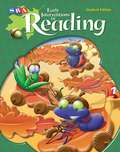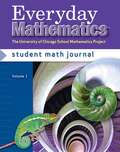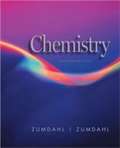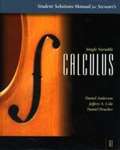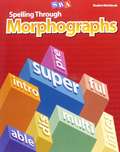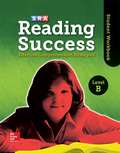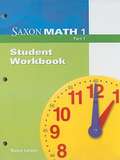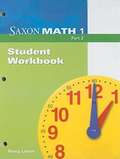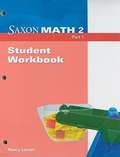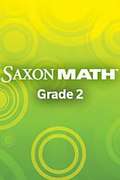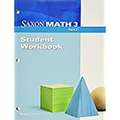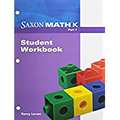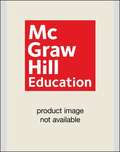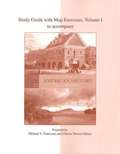- Table View
- List View
More NIMAC books are available at www.nimac.us. If you find your title in the NIMAC and not in Bookshare then please contact us to request it.
Stuck! (Fountas & Pinnell Classroom, Guided Reading)
by Jesse Parks Robert DunnNIMAC-sourced textbook. Up in the Tree Top. Little Lion likes to climb with Little Baboon. They climb to the top of a tree. But can Little Lion climb down? Or will he be stuck in the tree?
The Stuck Kite (Fountas & Pinnell Classroom, Guided Reading)
by Pat McCann Dave CleggNIMAC-sourced textbook. Stuck! What's worse than a kite stuck in a tree? Read and see!
Student Math Journal Volume 1 (Everyday Mathematics® Grade 6)
by Max Bell Andy Isaacs Amy DillardNIMAC-sourced textbook
Student Notebook, Middle School Life Science (STEMscopes™ CA-NGSS 3D)
by Inc. Accelerate Learning Rice UniversityNIMAC-sourced textbook
Student Notebook, Middle School Physical Science (STEMscopes™ CA-NGSS 3D)
by Inc. Accelerate Learning Rice UniversityNIMAC-sourced textbook
Student Science Workbook McGraw Hill: States of Matter, Chapter Resources for Differentiated Instruction
by McGraw HillNIMAC-sourced textbook
Student Solutions Guide to Accompany Chemistry
by Thomas J. Hummel Steve S. Zumdahl Susan Arena ZumdahlProvides carefully worked out, complete solutions for all odd-numbered questions and exercises in the text. Uses the same solutions methods as examples in the text.
Student Solutions Manual for Single Variable Calculus
by Daniel Anderson Jeffery A. Cole Daniel DruckerProvides completely worked-out solutions to all odd-numbered exercises within the text, giving students a way to check their answers and ensure that they took the correct steps to arrive at an answer.
Student Study Guide for use with Traditions and Encounters, A Global Perspective on the Past, Volume 1, From the Beginning to 1500
by Rose Mary Sheldon Herbert F. Ziegler Jerry H. BentleyNIMAC-sourced textbook
Student Study Guide for use with Traditions and Encounters, A Global Perspective on the Past, Volume II, From 1500 to the Present
by Kenneth E. Koons Herbert F. Ziegler Jerry H. BentleyNIMAC-sourced textbook
Student Workbook, Level B [Grade 5]
by Bob DixonHelp your students gain and master essential comprehension skills and strategies with SRA Reading Success. This supplemental reading program requires only 25 minutes, three days per week, to make a dramatic improvement in a student's ability to understand what they read. The program builds vocabulary skills by helping students derive meaning from context, and adds to students' general word knowledge through a wide variety of high-interest readings. In addition, it is designed to help students transfer this knowledge to improve their performance on national and state assessments. With SRA Reading Success you teach students to comprehend by teaching them explicit comprehension strategies that can be applied to any reading task, including: Determining the main idea and supporting details Identifying an author's purpose Paraphrasing and summarising Drawing inferences Using context to figure out word meanings
Student Workbook, Saxon Math 2, Part 1
by Nancy Larson Roseann Paolino Maureen HannanNIMAC-sourced textbook
Student Workbook, Saxon Math 2, Part 2
by Nancy Larson Roseann Paolino Maureen HannanNIMAC-sourced textbook
Student Workbook, Saxon Math 3, Part 2
by Nancy Larson Sharon Molster Orio Jeanne Honore MillerNIMAC-sourced textbook
Study Guide for use with Psychology: The Science of Mind and Behavior
by Dianne Leader Ronald D. Smith Michael W. PasserEach chapter of the study guide begins with a list of Learning Objectives, which are expanded from the Focus Questions found in the margins of the textbook. When you feel you have mastered the material in the chapter, you will want to revisit these objectives and make note of any that require further study. Following the Learning Objectives is a brief Chapter Overview and Chapter Outline, which will help you see at a glance how the material in the chapter is organized. Like most study guides, this one contains an array of exercises, such as fill-in-the-blank, multiple-choice, and true-false self-tests, to help you memorize information you need to know to succeed. When you do these exercises, you will be engaging in active learning, which has been shown to be more effective than passive learning (i.e., reading the material the way you would read a novel). In addition, features such as Apply What You Know, Analyze This, and On the Web will prompt you to implement concepts you have learned, sharpen your analytic and research skills, use your creativity to explore resources that psychologists use in carrying out their work, and apply your critical thinking ability to evaluate "pop" psychology on the Internet.

